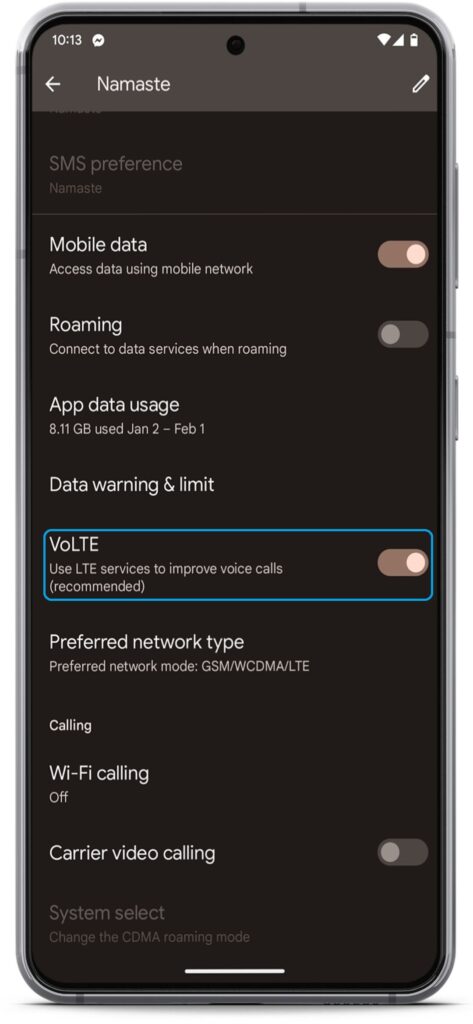4G vs VoLTE often pops up on the internet and is commonly heard among smartphone users. Both are related to mobile service and are intricately related. 4G also known as LTE and VoLTE, are two popular features provided by mobile network operators (MNOs) that are close but different technologies in mobile communication. Let’s find out the key differences between them.
4G vs VoLTE: Introduction | What are they?
4G or LTE short for Long Term Evolution is the next-generation standard in cellular communication. It is the successor of 3G or a third-generation mobile network. 4G is a high-speed broadband network that unlocks several internet-heavy applications and uses them on smartphones. It is an all-IP-based standard. It uses standard communications to exchange packets. Even 4g voice (VoLTE), uses internet protocol.
On the other hand, VoLTE (Voice over LTE) is an IP-based voice service on a 4G network that enables HD voice calls for users. The special thing about it is that it allows users to enjoy both calls and high-speed internet simultaneously.
How 4G works?
4G uses high-speed uplink and downlink packets. It is an advanced radio system. The 4G base station broadcasts signals and user-end devices communicate to these stations (cell towers) which then transmit data from the internet to and from users’ devices.
How 4G VoLTE works

VoLTE uses a very complex set of technologies to make it work. It works with the user device connecting to the nearest 4G tower. If a VoLTE call is enabled, the call is then conveyed to the tower as a regular voice call but the tower will treat it with a VoIP method and transfer it to the recipient who answers the call using VoLTE.
Recommended: Evolution of Mobile Technology (1G, 2G, 3G, 4G, 5G, 6G)
4G LTE vs VoLte Performance
4G delivers high-speed broadband internet on mobile phones. A third-generation cell tower can serve only around 100 people for an efficient voice service while its real-life data speed reaches 10 Mbps on average. The 4G network can serve hundreds of people simultaneously for mobile services. Plus, its broadband speed greatly exceeds that of 3G with its downlink speed clocking an average of 50-60 Mbps.
It also improves latency. It is the duration it takes for user data to reach the server. A normal 4G latency averages 20 to 40 ms, the lower the number the better.

As stated, 4G VoLTE allows both voice and data on smartphones. With the feature, users can enjoy high-speed mobile data and HD calls. In a regular situation, when a user makes a call on a 4G network, the phone falls back to 3G or 2G depending on the availability and the strength of the signals between the two. The benefit is enjoying smoothly running internet to browse social media, surf news, download/upload files, or anything internet while also making clear and snappy calls.
Coverage
4G is largely available around the world and is expected to reach 5.7 billion subscriptions by the end of 2023.
VoLTE should be available where 4G is. But it requires a multi-tier effort to enable the HD voice service in a particular region. So, just having 4G doesn’t guarantee the availability of VoLTE. There are estimates that around 5 billion people have VoLTE subscriptions.
4G LTE vs VoLTE Activation requirement
4G activation is basic in difficulty. Most phones come with 4G support. Smartphone users can access the network from the Setting app, from where network preference can be activated that includes 4G or LTE only or a combination of many networks. But carrier-unlocked phone users also need a 4G SIM card to reap the benefits of the high-speed broadband network.
Telcos provide VoLTE only after expanding 4G. But for the users, their smartphone and SIM card both need to be 4G-compatible. Most modern-day smartphones such as iPhone 14, Samsung Galaxy S22, or even those from a few years back come with VoLTE inside it. However, manufacturers hide it if it’s not available in the country from the telcos’ side. Only after multilateral works, VoLTE arrives in a particular region.

Related: Will 4G Phones Work on a 5G Network? Let’s Debunk the Myth
4G vs VoLTE key differences in summary
Find out the key differences between 4G vs VoLTE in the table below.
| 4G LTE | VoLTE |
| It is a wireless mobile network standard. | It is a data communication system based on a 4G network |
| It is the fourth-generation mobile network | It is based on a 4G network. |
| It natively supports only high-speed data | It supports both high-speed 4G network and HD voice calls simultaneously |
| While placing a call on 4G, the phone turns off data and falls to lower networks | It allows both data and calls. |
| Call connection is slower on 4G | Call between VoLTE users is always faster |
| To use 4G for video calls, a third-party app is needed | Video call is supported natively by the phone on VoLTE. |
| 4G is widely available in the world | Not all telcos offer VoLTE for their users |
For more on how to activate both or either of these technologies on your phone, let us know in the comments. We would be happy to help you out.
